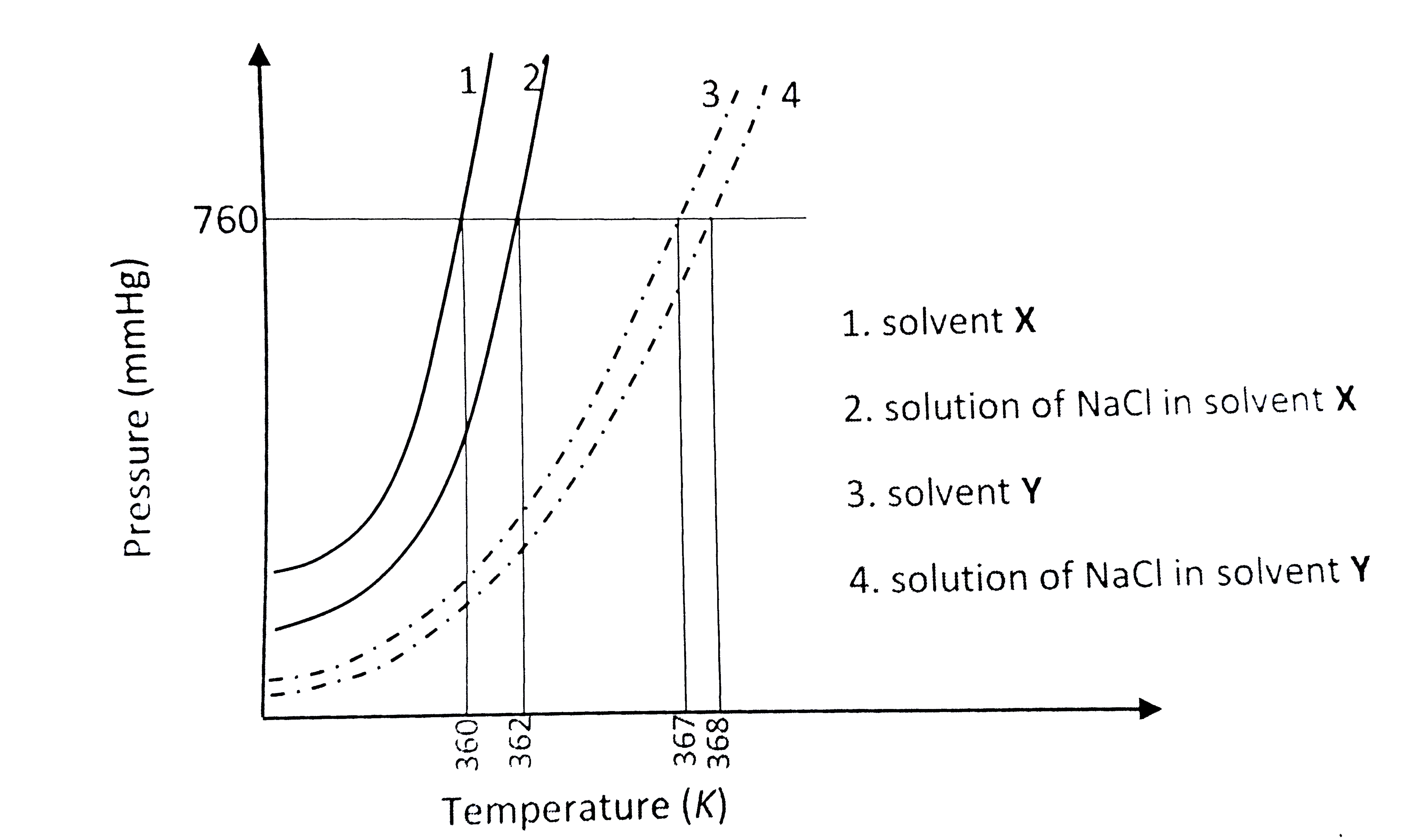The plot given below shows P - T curves (where P is the pressure and T is the temperature ) for the solvents X and Y and isomolal solutions of NaCl in these solvents. NaCl completely dissociates in both the solvents.

On addition of equal number of moles of a non - volatile solute S in equal amount ( in kg) of these solvents, the elevation of boiling point of solvent X is the three times that of solvent Y . Solute S is known to undergo dimerization in these solvents. If the degree of dimerization is 0.7 in solvent Y, the degree of dimerization solvent X is ........ .
The correct Answer is:0.05
(0.05) : Refer Advanced Level Problems , Problem 21 (page 64)
Topper's Solved these Questions
- SOLUTIONSBOOK - MODERN PUBLICATIONCHAPTER - SOLUTIONSEXERCISE - UNIT PRACTICE TEST
14 Videos
- SOLUTIONSBOOK - MODERN PUBLICATIONCHAPTER - SOLUTIONSEXERCISE - COMPETITION FILE (MARTIX MATCH TYPE QUESTIONS)
2 Videos
- SOLID STATEBOOK - MODERN PUBLICATIONCHAPTER - SOLID STATEEXERCISE - UNIT PRACTICE TEST
13 Videos
- SURFACE CHEMISTRYBOOK - MODERN PUBLICATIONCHAPTER - SURFACE CHEMISTRYEXERCISE - COMPETITION FILE (OBJECTIVE TYPE QUESTIONS) (MATCHING LIST TYPE QUESTIONS)
2 Videos
Similar Questions
The plot given below shows P−T curves (where P is the pressure and T is the temperature) for two solvents X and Y and isomolal solutions of NaCl in these solvents. NaCl completely dissociates in both the solvents.

On addition of equal number of moles of a non-volatile solute S in equal amount (in kg) of these solvents, the elevation of boiling point of solvent X is three times that of solvent Y. Solute S is known to undergo dimerization in these solvents. If the degree of dimerization is 0.7 in solvent Y, the degree of dimerization in solvent X is ____.
View SolutionThe plot given below shows P – T curves (where P is the pressure and T is the temperature) for two solvents X and Y and isomolal solutions of NaCl in these solvents. NaCl completely dissociates in both the solvents.

On addition of equal number of moles of a non-volatile solute S in equal amount (in kg) of these solvents, the elevation of boiling point of solvent X is three times that of solvent Y. Solute S is known to undergo dimerization in these solvents. If the degree of dimerization is 0.7 in solvent Y, the degree of dimerization in solvent X is ______________.
View Solution
Knowledge Check
Addition of a non-volatile solute in a volatile ideal solvent
AIncreases the vapoure pressure of the solvent Decreases the vapour pressure of the solventBDecreases the vapoure pressure of the solventCDecreases the boililng point of the solventDIncreases the freezing point of the solventPartial pressure of solvent in solution of non-volatile solute is given by equation.
Ap=x2p∘Bp∘=xpCp=x1p∘Dp∘=x1pThe vapour pressure (VP) of a dilute solution of non-volatile solute is P and the VP of a pure solvent is P∘. The lowering of the VP is
A+veB−veCP/P∘DP∘/P
Why is boiling point of a solvent elevated upon the addition of a non-volatile solute ?
View SolutionIf a non-volatile solute is dissolved in a volatile solvent relative lowering of vapour pressure is equal to
View SolutionHow is the vapour pressure of a solvent affected when a non volatile solute is dissolved in it?
View SolutionHow is the vapour pressure of a solvent affected when a non volatile solute is dissolved in it?
View SolutionIf a non-volatile solute is dissolved in a volatile solvent relative lowering of vapour pressure is equal to
View Solution
